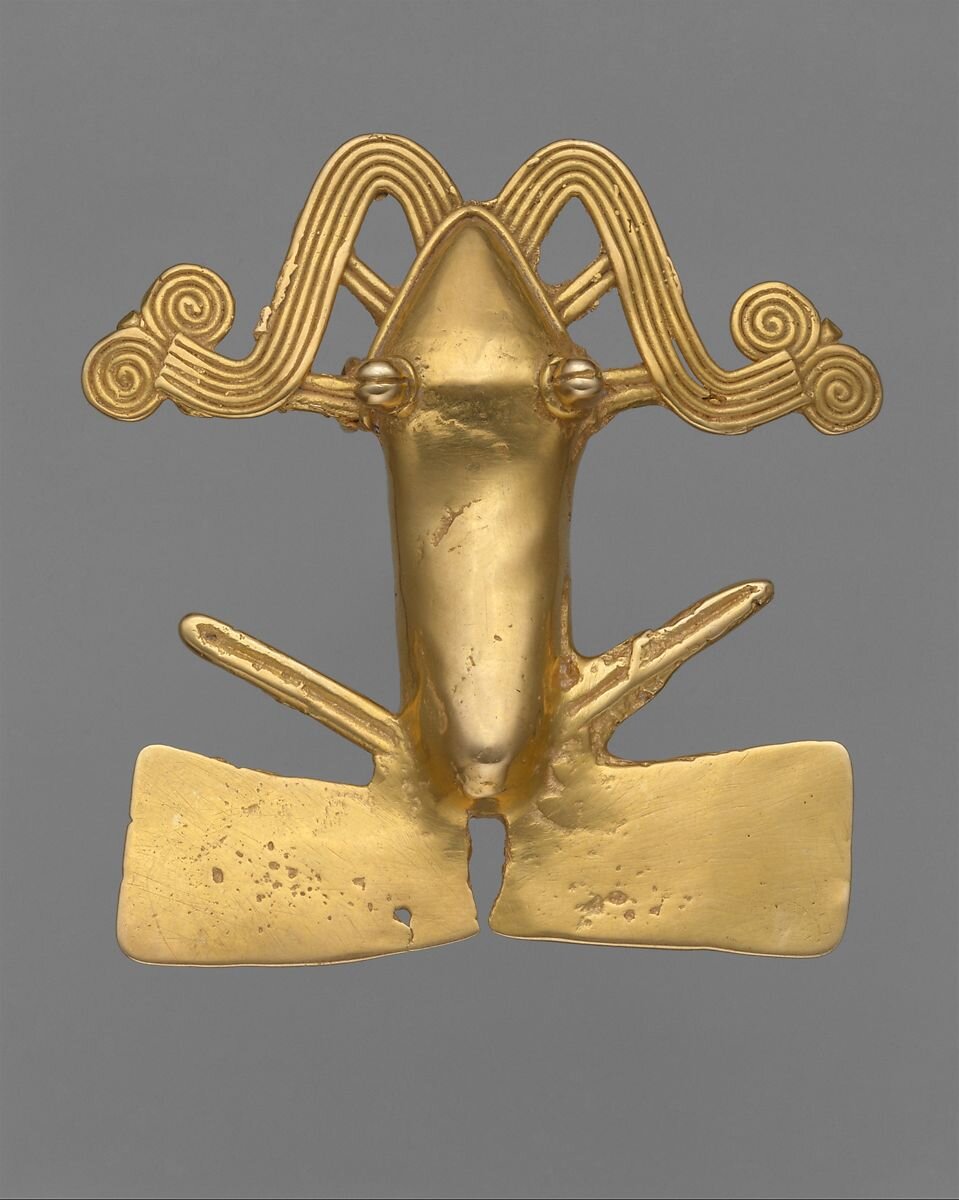La Rana Dorada de Panama
The Golden Frog of Panama
Frogs have been widely recognized as symbols of good fortune for millennia. Ancient civilizations in Asia, Africa and the Americas all associated the frog with the life-giving properties of water and rain. (For those interested, The House has explored the general topic of lucky frogs and toads over in the Lucky Charms Gallery).
The golden frog or rana dorada (Atelopus zeteki) is a national symbol of Panama, where the tiny creature is regarded as a fertility symbol and harbinger of good fortune. According to the San Diego Zoo’s website, “For many years, the frogs were captured and taken into hotels and restaurants to promote tourism, as well as placed in people’s homes for good luck.” There is even a National Day of La Rana Dorada in Panama — August 14.
These yellow and black amphibians were immortalized in elaborate golden ornaments made by artisans in Costa Rica and Panama. The association between these frogs and gold is a long-standing one. Local folklore teaches that the frogs turn to gold after they die, and anyone who happens upon the frogs in the wild will be blessed with prosperity.
Unfortunately, the golden frogs’ luck seems to have run out. They are a critically endangered species that is basically extinct in the wild due to the spread of a deadly fungus. Luckily for the frogs, they are now being selectively bred through a program at the Smithsonian’s National Zoo. Let’s hope they can get a healthy dose of their own good fortune and flourish in the wild again.



